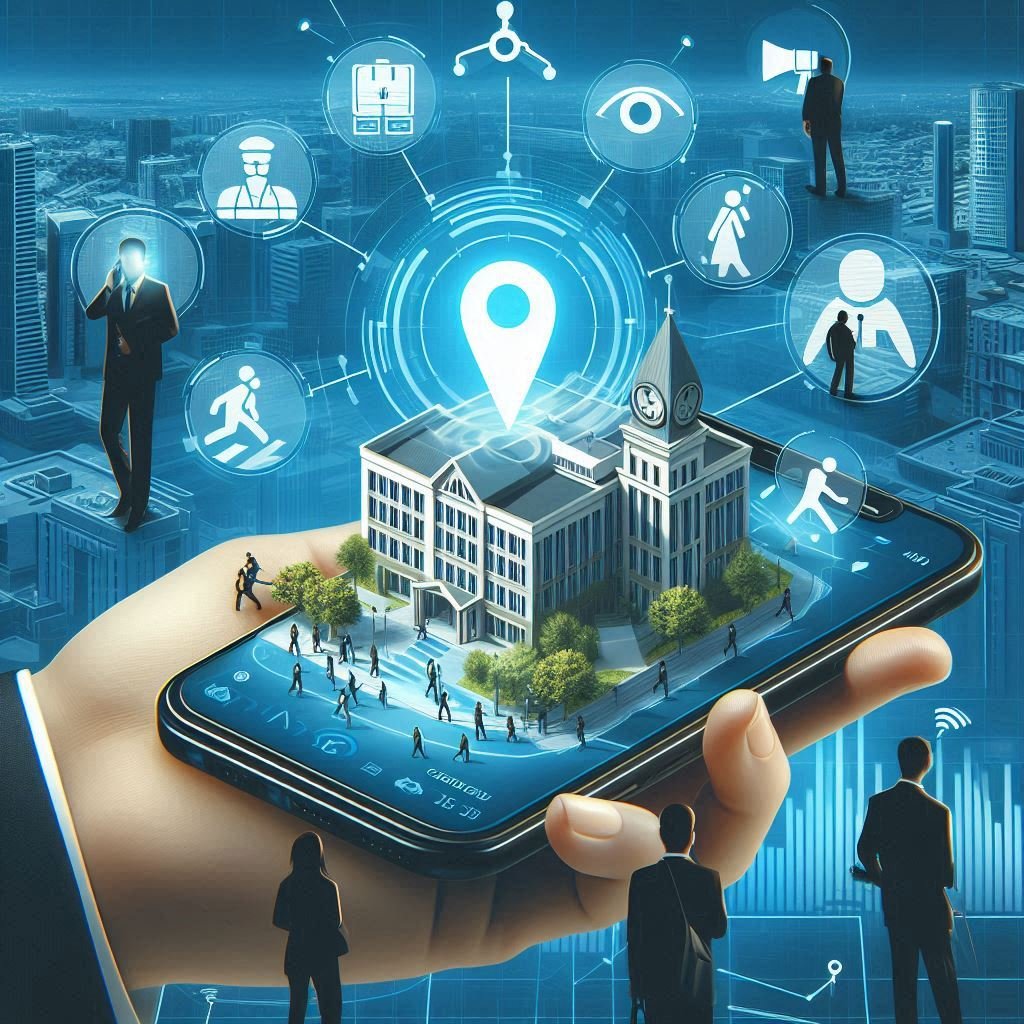



Indoor geolocation has become essential for ensuring the safety of people and assets in large public venues
In an increasingly connected world, indoor geolocation has become an essential technology for safety in large public places such as hospitals, train stations, airports, subways, universities and schools, and stadiums. This technology enables the precise location of people and objects inside buildings where traditional GNSS systems (Galileo, GPS, etc.) do not work efficiently.
Indoor geolocation is based on various technologies such as Bluetooth beacons, Wi-Fi, RFID sensors and smart surveillance cameras. These devices track the movements of people and goods in real time, providing an instant, accurate overview of the situation inside buildings.
One of the main benefits of indoor geolocation is improved personal safety. In the event of an emergency, such as a fire or attack, security managers can quickly locate individuals and coordinate rescue operations more efficiently. What’s more, this technology can monitor sensitive areas and detect suspicious behavior, helping to prevent incidents before they happen.
Indoor geolocation also plays a crucial role in protecting lone workers. These employees, who are often exposed to greater risks due to their isolation, can benefit from geolocation-enabled safety devices. In the event of an incident or accident, if an emergency button is pressed, a geolocation alert can be sent instantly to rescue teams. This feature makes it possible to pinpoint the exact location of the worker in distress, and rapidly deploy the necessary help. In this way, indoor geolocation contributes to the safety of isolated workers, ensuring rapid, effective intervention when needed.
Indoor geolocation plays a crucial role in emergency management. Geolocated emergency calls enable rescue services to know immediately the exact location of the person in distress, reducing response time. First responders can be directed precisely to the scene of the incident, improving the efficiency of their intervention. What’s more, the coordination of rescue operations is facilitated by a real-time overview of the situation, enabling resources to be better allocated and a faster, more organized response.
Indoor geolocation also plays a crucial role in asset protection. Companies can track valuable assets, such as medical equipment in hospitals or goods in warehouses, reducing the risk of theft or loss. If an object goes missing, it is possible to trace its last known location and take swift action to recover it.
Indoor geolocation offers considerable advantages for security solution providers. By integrating this technology into their offerings, they can provide more comprehensive and effective solutions, responding to the growing need for security in large public places. The ability to pinpoint the precise location of people and assets in real time means they can react more quickly and in a more coordinated way in the event of an emergency, improving overall security.
But while location accuracy and the ability to discriminate between floors are crucial aspects of indoor geolocation, they alone are not enough to guarantee optimum safety. The availability of the location service is just as essential. It is imperative that the system is operational and reliable when it is most needed. The reliability of the information provided, the integrity of the system and its robustness in the face of cybersecurity threats are also critical. Last but not least, suppliers’ ability to commit to and guarantee service availability levels is essential to ensure effective, ongoing protection of people and assets in large public places. In short, indoor geolocation must not only be accurate, but also reliable, secure and always available to meet modern security requirements.
What’s more, indoor geolocation can be a major selling point for security companies, enabling them to differentiate themselves in the marketplace. By offering innovative, state-of-the-art solutions, they can attract new customers and strengthen their competitive position. With the evolution of technologies and the integration of artificial intelligence, indoor geolocation is even more precise and versatile, paving the way for new applications and opportunities for security solution providers.
Pole Star has gained extensive experience working alongside its customers and partners, including security companies, deploying its solutions from the NAO suite in a variety of environments such as hospitals, healthcare facilities, universities and transport hubs. By committing itself to its partners, Pole Star makes available the best of indoor localization with « best-in-class performance levels”. These solutions meet the critical challenges of personal and property safety, guaranteeing optimum accuracy, reliability and availability. Thanks to this expertise, Pole Star continues to play a key role in improving safety in large public places.
Contact us for more information:
Please do not hesitate to contact us to find out more about indoor geolocation for the safety and security of people and assets .